On View
These 11 Artists Will Transform the Art World in 2017
Their contributions can promote fresh ideals in the new year.
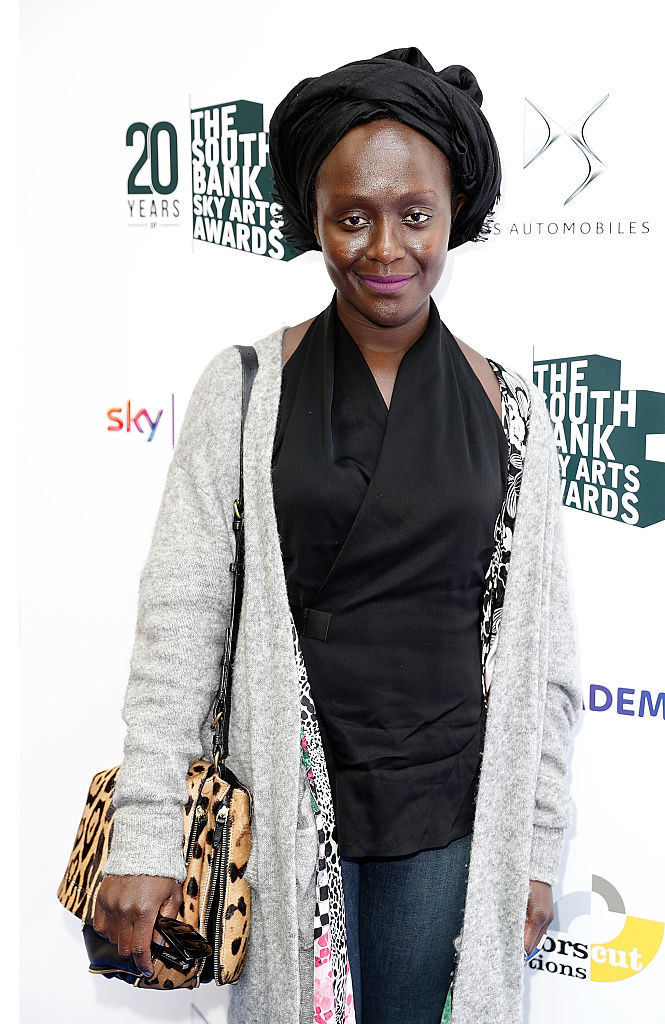
Their contributions can promote fresh ideals in the new year.

Christian Viveros-Fauné

More than any year in recent memory, 2017 promises to be a spectacularly messy and uncertain year. Brexit, terrorism, and the immigration crisis threaten the existence of the European Union, as German chancellor Angela Merkel faces tough opposition as she runs for a fourth term. Meanwhile, the United States will see what a misogynistic real estate kingpin does to the White House.
While observers continue to forecast bullish days for the art market—seemingly only a 1920s-style crash can quash expensive art’s growth as an alternative currency—2017 looks to be the year when art and artists encounter politics and cultural commentary head on.
With this in mind, here’s a second prediction for the year ahead: cultural polarization will force a rereading of much art of the past and present, which of course includes work by, among others, dead white males.
Below are just some of some of the artists and art collectives whose work one expects will gain in traction and influence in the new year. The more prominent of these figures operate (or once operated) independently from the network of blue-chip galleries.
Consequently, their contributions—along with those of younger creators—can help set new standards for artistic value that may, one hopes, be more suited to the world today.
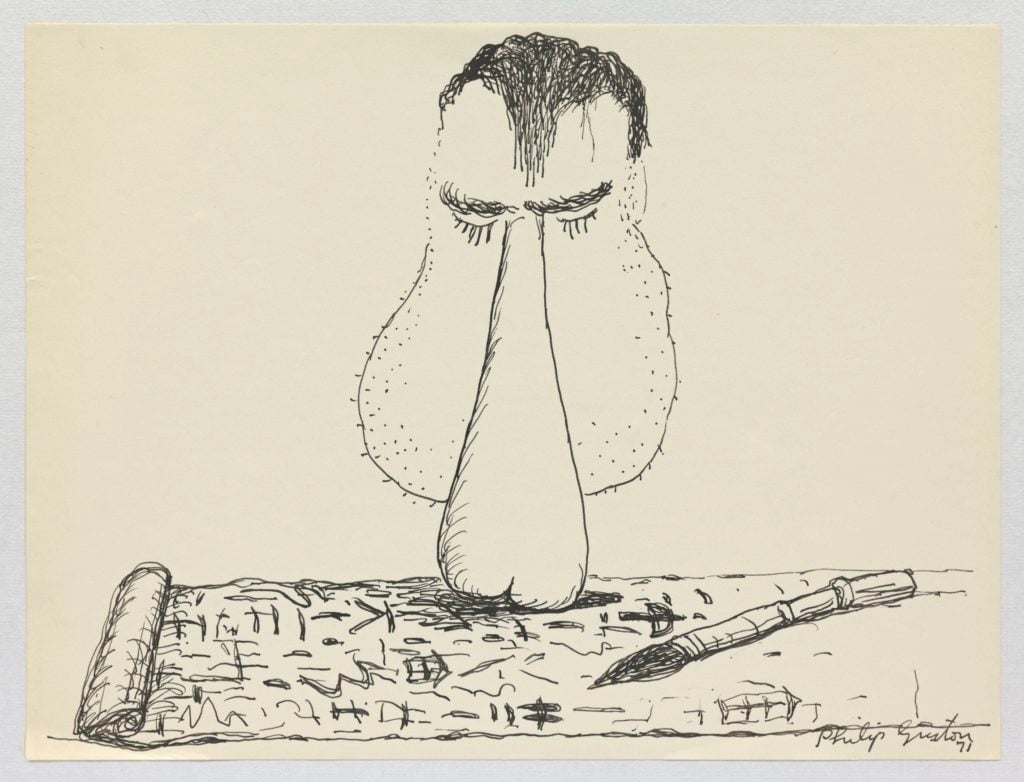
Philip Guston, Untitled
1971, Ink on paper, © The Estate of Philip Guston, Courtesy Hauser & Wirth
1. Philip Guston
After Richard Nixon won the White House in 1968 by less than one percent of the popular vote, Ab-Ex painter Philip Guston unburdened himself to an interviewer: “The war, what was happening to America, the brutality of the world. What kind of man am I, sitting at home, reading magazines, going into a frustrated fury about everything—and then going into my studio to adjust a red to a blue?”
Besides turning to figuration—an art world scandal that anticipated Dylan’s going electric—Guston also penned a suite of ink drawings that skewered America’s 37th President.
Brought together for the first time at Hauser & Wirth’s downtown New York space, “Philip Guston: Laughter in the Dark, Drawings from 1971 & 1975” features some 180 Nixon satires and over 100 additional never-before-seen works. On view until the end of January, these drawings take early honors as the top show of the New Year.
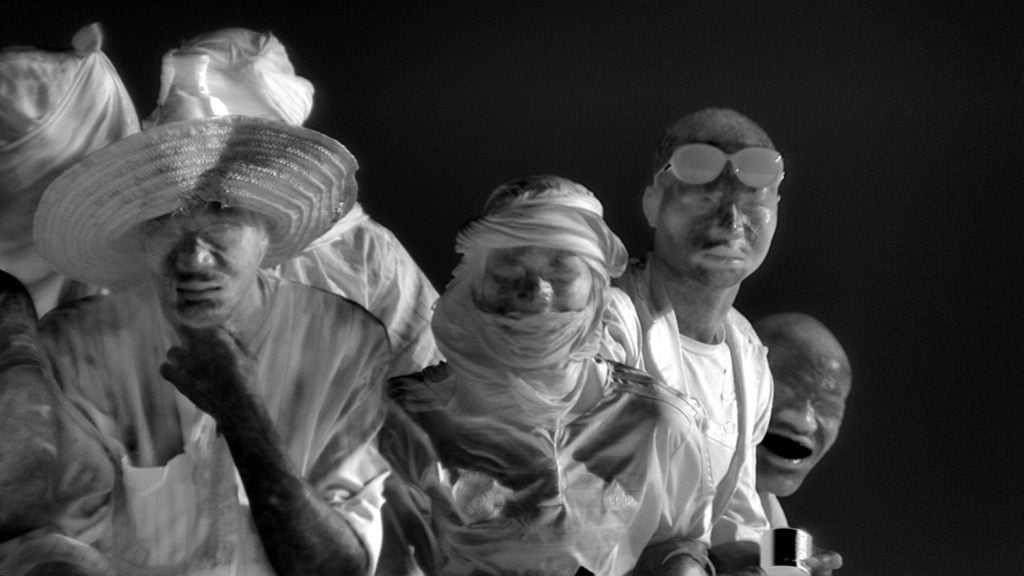
Still frame from “Incoming,” three-channel video installation (2016-17), Richard Mosse. Co-commissioned by the Barbican Art Gallery, London, and National Gallery of Victoria, Melbourne. Courtesy of the artist, Jack Shainman Gallery, New York, and carlier|gebauer, Berlin.
2. Richard Mosse
Conceptual documentary photographer Richard Mosse—in collaboration with composer Ben Frost and cinematographer Trevor Tweeten—has spent several years working with a powerful thermal military camera that can record people from a distance of 18 miles. Because the camera sees with the accuracy of a missile, Mosse has used it to create spectacular artworks about the global migration crisis. A narrative of the journey made by millions of refugees and migrants across Europe, North Africa, and the Middle East, this epochal story is relayed via a number of large-scale photographs and a 26-foot-wide video installation.
The video goes on view at London’s Barbican on February 15; the photos at Jack Shainman Gallery on February 2 and on May 4 at the Victoria & Albert Museum, where Mosse is a finalist for the Prix Pictet photography award.
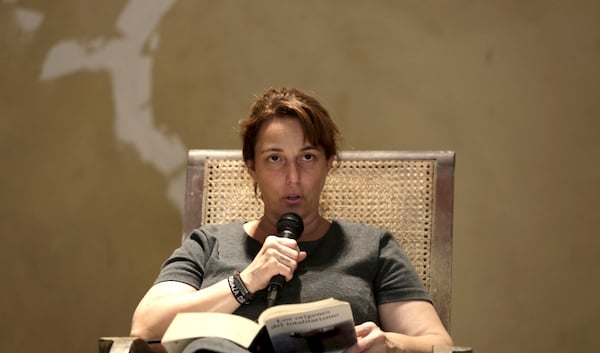
Tania Bruguera reading from Hannah Arendt’s book “The Origins of Totalitarianism”
Photo: Enrique de la Osa via PRI
3. Tania Bruguera
First she defended her right to stage a performance critical of the Cuban government. Then she set up the Instituto de Artivismo Hannah Arendt (INSTAR), “a hub for civic literacy in Cuba,” as she describes it, that works with Cubanos de pie—everyday Cubans—to fight for democracy and social justice. Now, the self-described “artivist” has taken on her biggest challenge yet: to run for president of Cuba when Raul Castro steps down in 2018.
Bruguera has proposed her own utopian candidacy “to build a Cuba where we are all in charge and not just the few.” The 2016-2017 Radcliffe Fellow plans to use the upcoming year to help transform Cuba’s “culture of fear.”
Viva Presidente Tania!
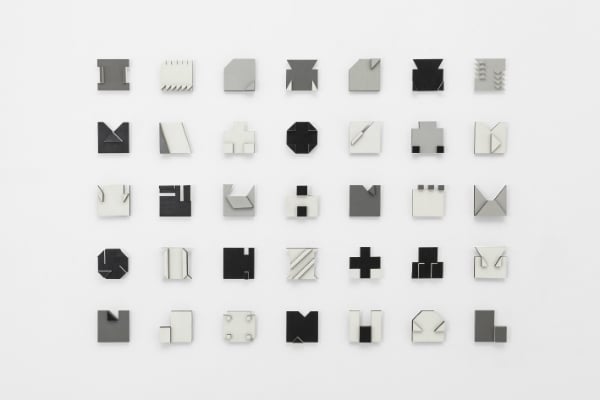
Lygia Pape, Book of Night and Day, (1963-1976). Courtesy of Hauser & Wirth, ©Projeto Lygia Pape
4. Lygia Pape
Initially inspired by 1950s pure geometric abstraction, Brazilian artist Lygia Pape eventually tired of its formal severity. In 1959, she moved on to become a founding member of the Neo-Concrete movement—alongside fellow artists Lygia Clark and Hélio Oiticica—a group dedicated to the inclusion of art in everyday life.
Pape not only broke away from preconceived categories in her art, she also sought to inject an urgent new expressiveness into post-war abstraction that was not available in its European and American variant. Her contributions to art’s expanding geo-politics will be on view in a long-awaited first US monographic exhibition at the Met Breuer in the spring of 2017.
![Jimmie Durham, La Poursuite du Bonheur [The Pursuit of Happiness], 2003 35mm film transferred to DVD, color, sound. 13:00 min. Courtesy of the artist and kurimanzutto, Mexico City.](https://news.artnet.com/app/news-upload/2016/12/jimmie-durham.jpg)
Jimmie Durham, La Poursuite du Bonheur [The Pursuit of Happiness] (2003). Courtesy of the artist and kurimanzutto.
This year, Durham’s critical art comes home in the form of an aptly titled traveling museum survey: “Jimmie Durham: At the Center of the World.” The exhibition will be on view at the Hammer Museum in Los Angeles (January 29 – May 7), the Walker Art Center in Minneapolis (June 22 – October 8) and the Whitney Museum in New York (November 3 – January 28, 2018).
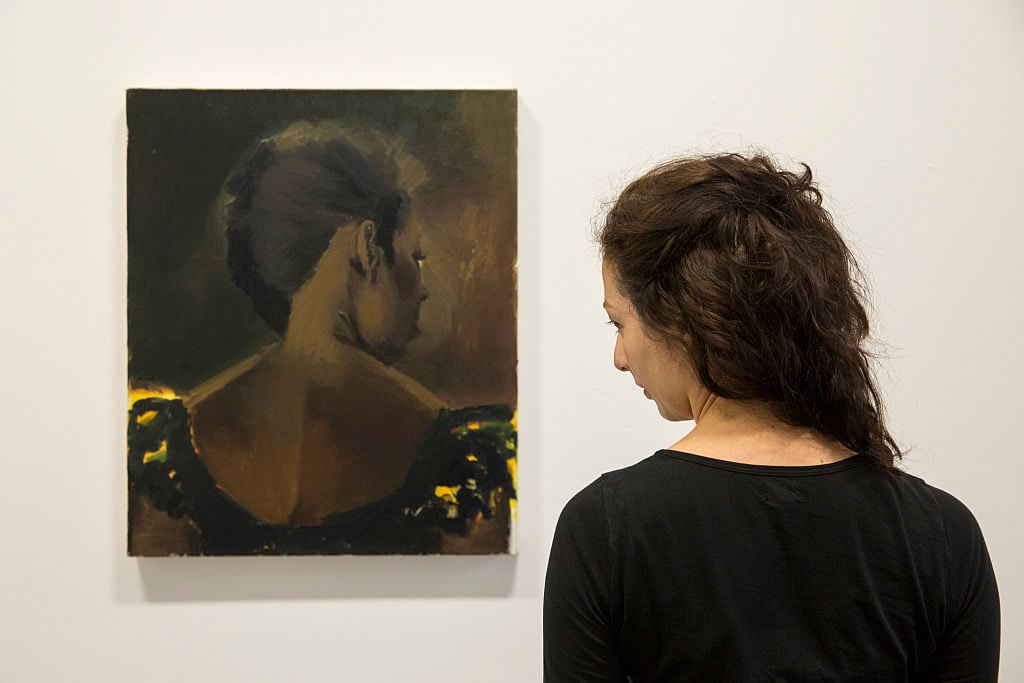
A gallery staffer poses beside Lynette Yiadom-Boakye’s The Matches at the Serpentine Gallery. Photo by Rob Stothard/Getty Images.
6. Lynette Yiadom-Boakye
A 2013 Turner Prize finalist and one of best painters of her generation, Yiadom-Boakye’s oil paintings embrace many of the conventions of European portraiture, yet they expand on that tradition by depicting subjects who are both fictional and black. Post-Obama-era updates of classic pictures by Velázquez, Manet, and Degas, Yiadom-Boakye’s canvases have been described as portraits of the idea of portraiture.
Like Kerry James Marshall before her, the artist is committed to creating a global black canon of painting where none previously existed. An up-to-date survey of her work goes on view at the New Museum on April 24.
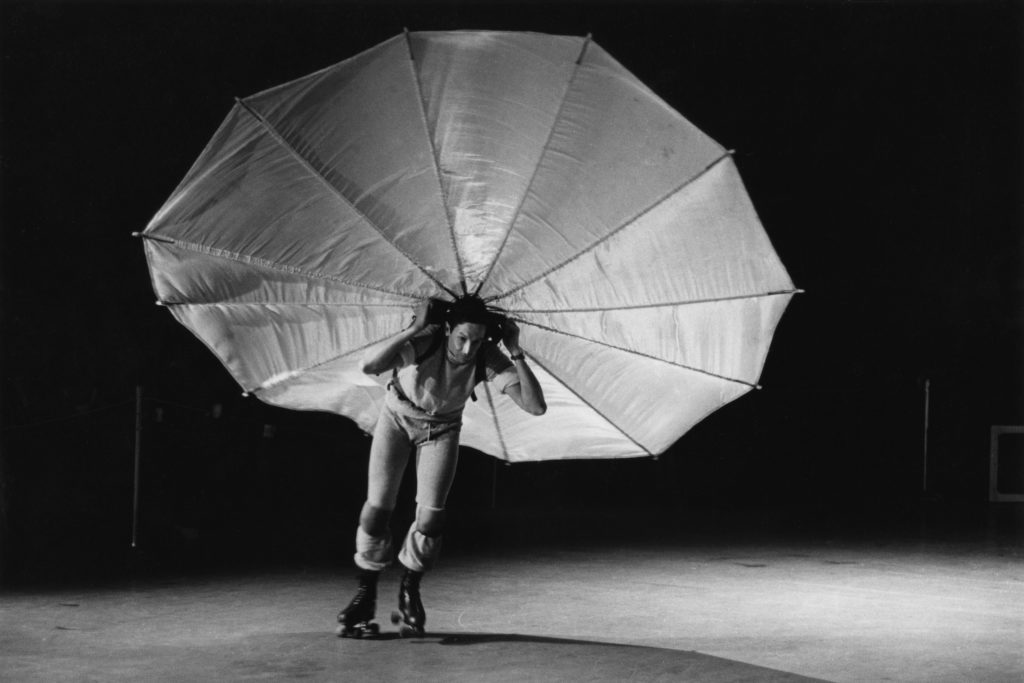
Peter Moore, documentation of Robert Rauschenberg’s Pelican (1963).
7. Robert Rauschenberg
The pied piper of artistic collaboration and the guru of inclusiveness with respect to unusual materials, Robert Rauschenberg became rightly famous for bringing the everyday world into his art. Alone or in collaboration with artists, dancers, musicians, and writers, he invented new artistic forms that make him a remarkably timely touchstone for the art of today.
A 21st-century retrospective of the late artist’s work, which is on view at Tate Modern through April 2, brings together over 250 paintings, sculptures, drawings, prints, photographs, and sound and video recordings. It travels to MoMA in late May.
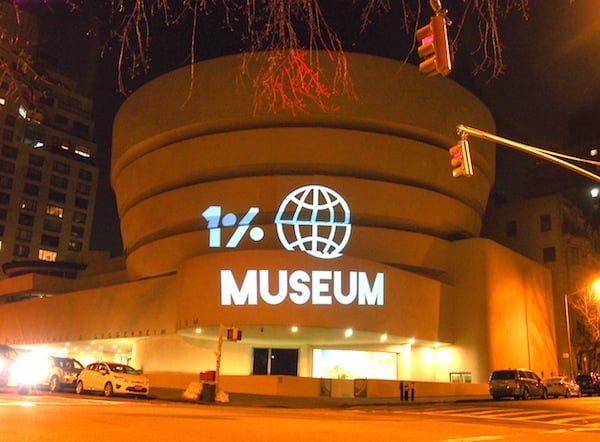
The Illuminator’s projection on the Guggenheim Museum. Courtesy the Illuminator.
8. Occupy Museums
If the artist list of this year’s Whitney Biennial is any indication, only a few of the participants are committed to mining art’s political dimensions. Among that reduced company is Occupy Museums, a group that emerged directly from the Occupy Wall Street movement. Since 2011, the collective has consistently zeroed in on the tight yet troubled relationship between art and capital.
Occupy Museums’ current focus is what the group calls the “shadow industry of debt”—which affects artists and non-artists alike. The upcoming biennial, which opens March 17, will serve as their latest platform to “reclaim space for meaningful culture by and for the 99%.”
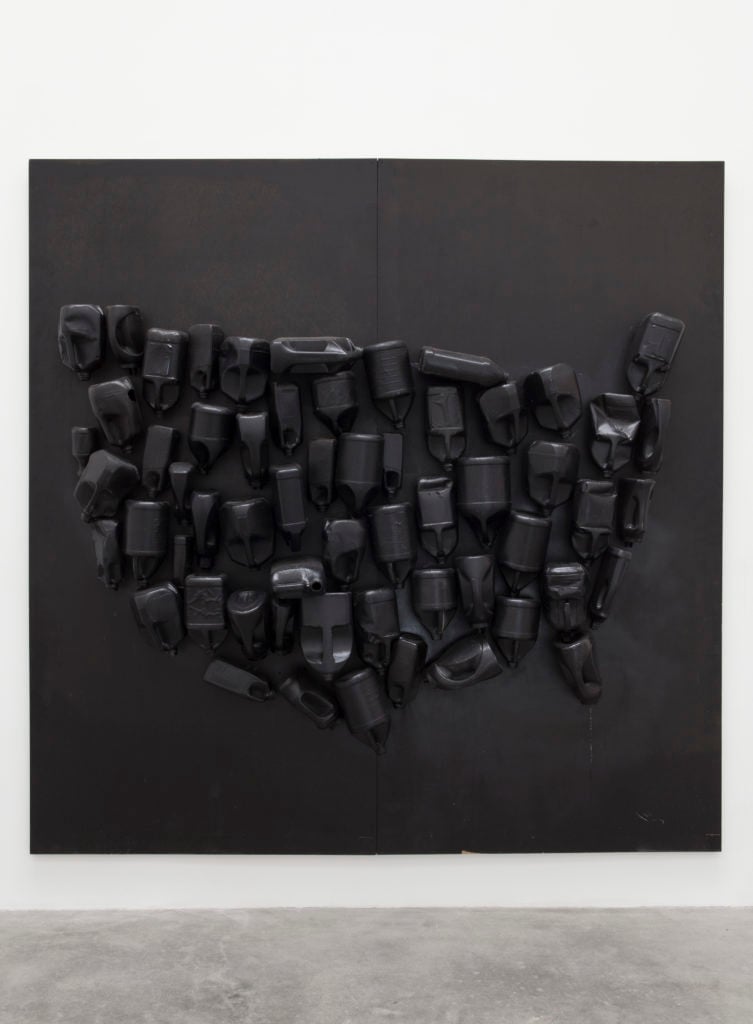
Henry Taylor, Darker The Better… (2013). Courtesy of the artist and Blum & Poe, Los Angeles/New York/Tokyo.
9. Henry Taylor
Because the stated aim of this year’s Whitney Biennial is to look both inward (to the “formation of self”) and outward (to “the individual’s place in a turbulent society”), LA painter Henry Taylor should, by all rights, be that exhibition’s poster child. Taylor’s work—his painting of Huey P. Newton jazzed up the Whitney’s 2016 portraiture show “Human Interest”—can be characterized with the following oxymoron: radical naïf.
Figurative and expressive, poppy yet brimming with racial tension, his paintings address painting, politics, history, and the human condition. If Black Lives Matter had an in-house painter, Taylor would be it.
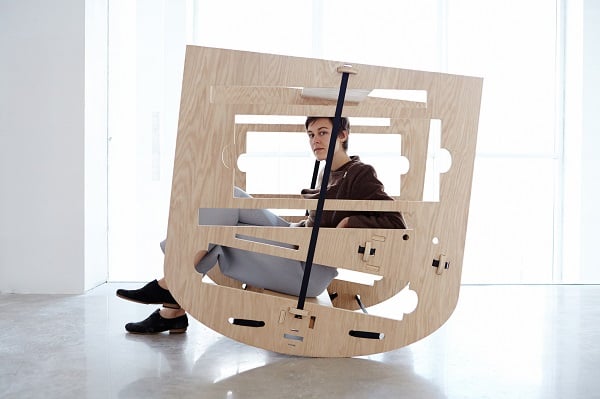
Caroline Woolard. Courtesy of Queens Museum.
10. Caroline Woolard
Artist, organizer, activist—these are only some of the words that describe Caroline Woolard, the all-around creative agent and thinker the NEA selected to deliver its post-election keynote address at the end of 2016. Other words that come to mind are writer, lecturer, and thinker. Whatever term one uses, Woolard is among the most compelling new voices looking to transform creativity beyond what the market offers.
Whether talking real estate (her NYC Real Estate Investment Cooperative is ongoing) or experimental systems of mutual aid (“Exchange Café” at MoMA in 2013), Woolard blurs the lines between object making, performance, community organizing and political activism. Among other events, she’s set to speak at the New York Academy of Art on March 1.

Hélio Oiticica, Seja Marginal, Seja Herói (Be an Outlaw, Be a Hero), 1968. Image courtesy Wikiart.
11. Hélio Oiticica
One of the most influential artists of the 20th century, Oiticica not only invented the term Tropicália, he pushed traditional boundaries of art in his native Brazil to anticipate global art phenomena like social practice and large-scale immersive installations. Oiticica spent a formative period in New York in the 1970s, where he engaged with the city and its artists, while extending his work into filmmaking, slide show environments, and concrete poetry.
Now the Brazilian, who died in 1980, is back with what is being billed as his “first full-scale retrospective in the United States.” The show, “Hélio Oiticica: To Organize Delirium,” which was at the Carnegie Museum of Art through January 2, travels to the Art Institute of Chicago (February 18 – May 7) before landing at the Whitney in the summer (July 14 – October 1).